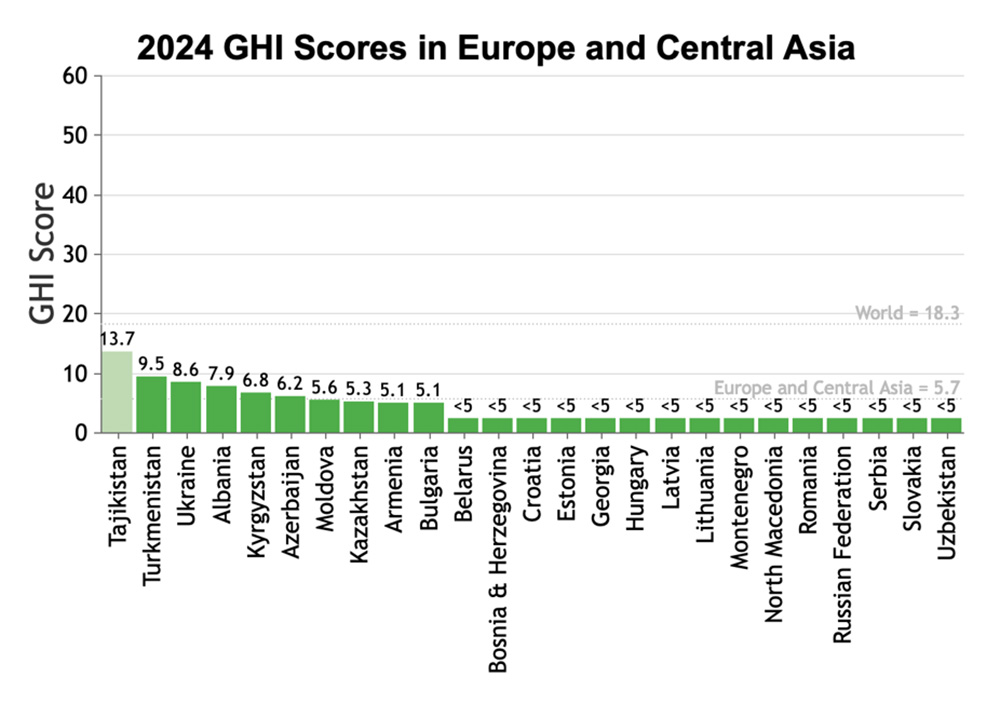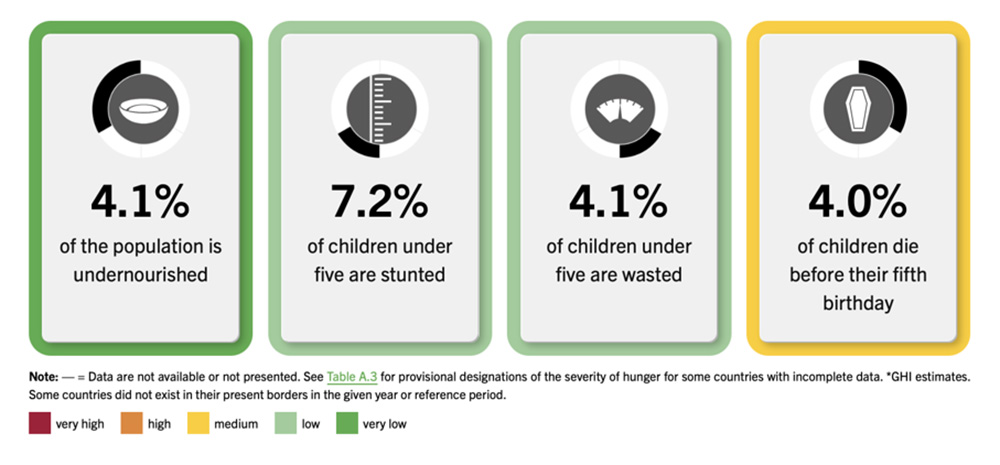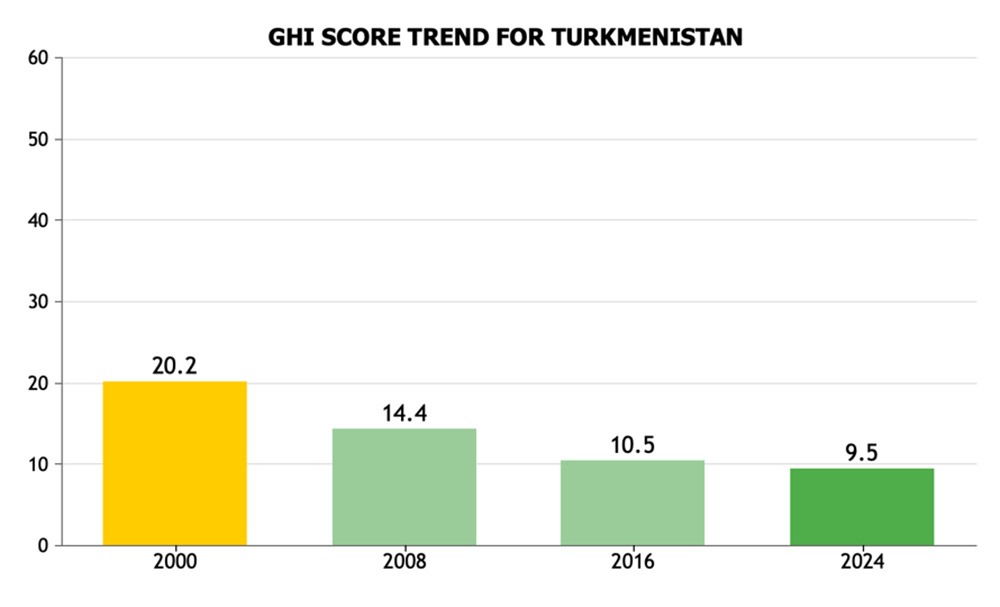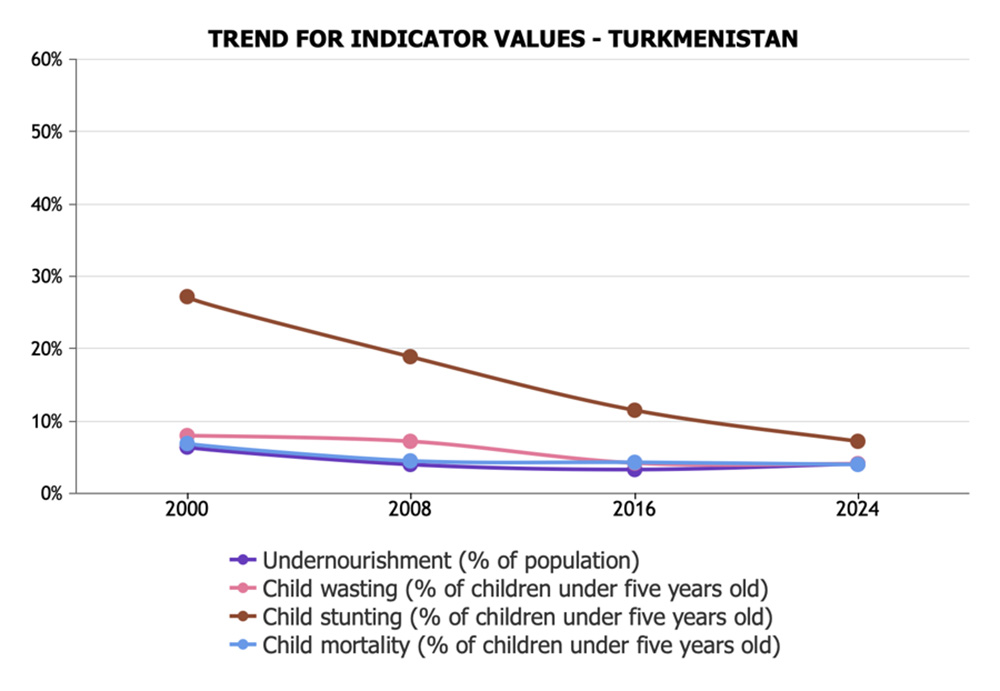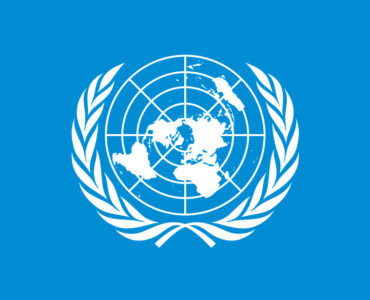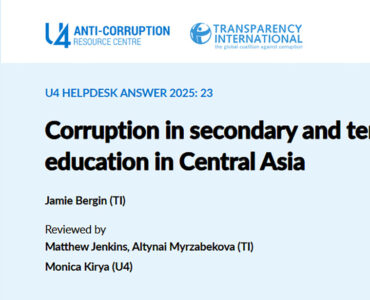The Global Hunger Index (GHI) is a tool for measuring and tracking hunger across countries and regions aiming to raise awareness about hunger and highlight areas needing urgent action. The FAO defines hunger as having fewer calories than needed for a healthy life, considering factors like age, sex, and activity level. The GHI uses indicators that assess both calorie deficiencies and malnutrition. These include:
- Undernourishment: Measures food access for the general population.
- Child Indicators: Tracks child malnutrition, including wasting (acute undernutrition) and stunting (chronic undernutrition), which can impact health, growth, and development.
The Global Hunger Index for 2024 shows that Central Asia made significant progress in reducing hunger between 2000 and 2016, mainly due to advances in agriculture and increased food availability. However, progress has slowed since then. Ongoing challenges, such as climate change, natural disasters, and the Russia-Ukraine war, continue to threaten food security by driving up the costs of food, energy, and agricultural production. Despite agriculture’s economic importance, most countries in the region are underfunding the sector. Among Central Asian nations, Uzbekistan has seen the greatest improvement, moving from a “serious” hunger rating in 2000 to the lowest hunger threat level in the region today. Meanwhile, Tajikistan is now the only country in Central Asia where hunger is a cause for concern.
Source: The Global Hunger Index 2024.
In the 2024 Global Hunger Index, Turkmenistan ranks 50th out of the 127 countries. With a score of 9.5 in the Index, Turkmenistan has a level of hunger that is low. Turkmenistan’s GHI Score is based on the values of four component indicators:
Source: The Global Hunger Index 2024.
Note: Undernourishment – the share of the population with insufficient caloric intake. Child stunting – the share of children under age five who have low height for their age, reflecting chronic undernutrition. Child wasting – the share of children under age five who have low weight for their height, reflecting acute undernutrition. Child mortality – the share of children who die before their fifth birthday, partly reflecting the fatal mix of inadequate nutrition and unhealthy environments.
From 2000 to 2024 Turkmenistan managed to decrease its GHI score by more than half (52.97%).
Donate to support Turkmen analysts, researchers and writers to produce factual, constructive and progressive content in their efforts to educate the public of Turkmenistan.
SUPPORT OUR WORKSource: The Global Hunger Index 2024.
The most significant improvement was in child stunting among children under five, which saw nearly a threefold decrease. In contrast, other indicators – undernourishment, child wasting, and child mortality – have remained unchanged since 2016.
Source: The Global Hunger Index 2024.
While Turkmenistan showcases a significant reduction in hunger levels since 2000, particularly in child stunting, it still faces challenges in combating undernourishment and child mortality. Using official population statistics, approximately 289,371 people in Turkmenistan remain undernourished. Access to food in Turkmenistan is being made more difficult by rising food prices. Continued efforts and investments in agriculture and nutrition are essential for the country to eliminate hunger and ensure a healthier future for all its citizens.


